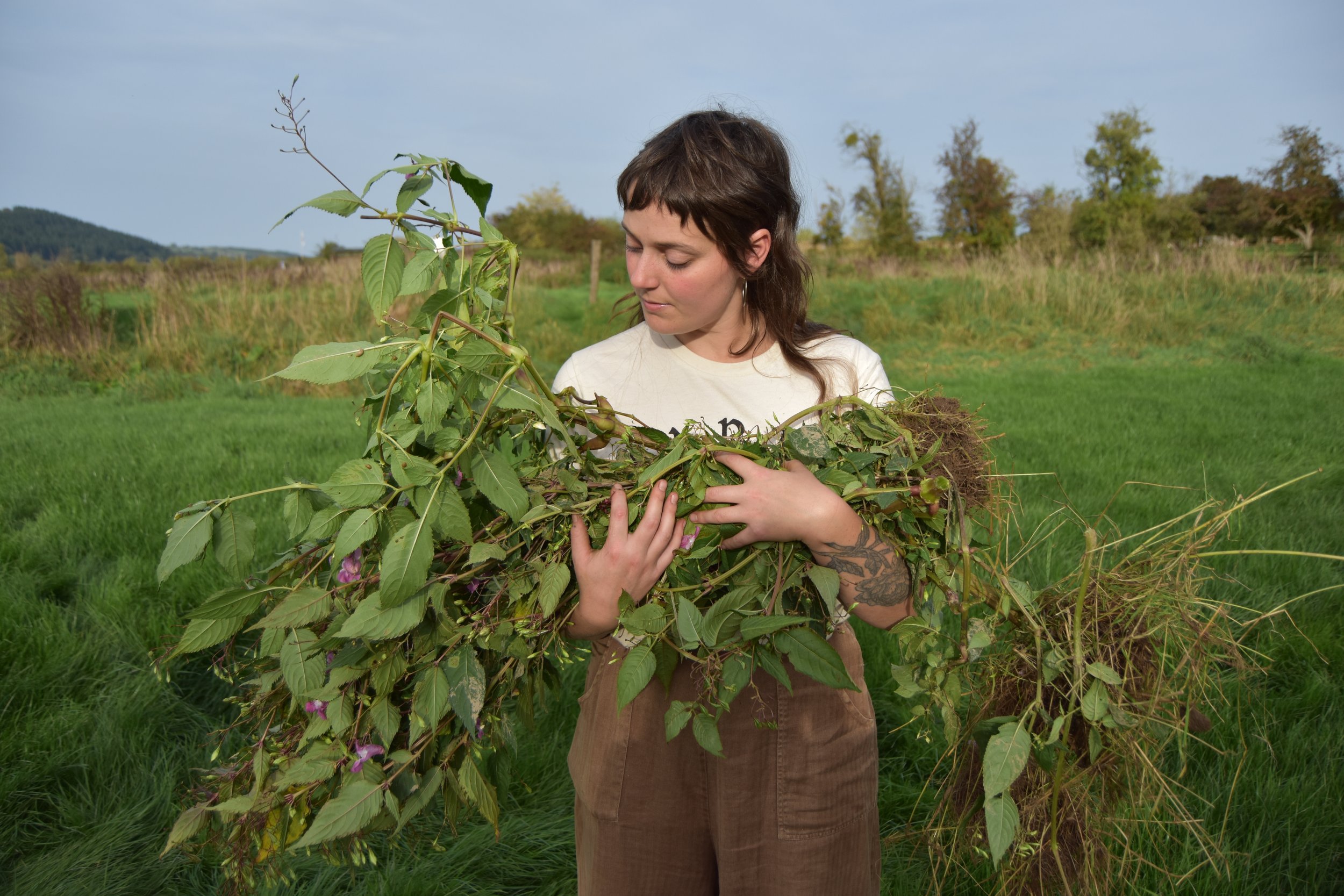Himalayan Balsam Creatures
What comes from the earth must go back; Himalayan Balsam creatures.
“Exploring material through the lens of an artist in the midst of ecological corruption and destruction, challenging the language of ‘sustainability’. How to create material from a non-native, invasive plant species through the interrogation of the plant matter, in aim to reduce an abundant invasive species and add value to the act of removing it. Turning something negative into a positive through design and craft. Creating a circular zero-waste production system by reusing each part of the plant and recycling it into a new material, in the aim to reframe attitudes around ecology and material choice, as well as promoting resilience and self-sufficient production.”







Available for exhibitions & workshops
Himalayan Balsam (Impatiens glandulifera)
Other names: Indian balsam, poor man's orchid, and Policeman's helmet, kiss-me-on-the-mountain
Himalayan Balsam, a cousin of the Busy Lizzie, entered the UK in 1839 as an economical garden plant (CABI.org). Initially dubbed "Mr Noisy's Exploding Plant" to entice children, it has since become a prolific invader, spreading to 23 European nations, as well as the US and New Zealand.
Recognizing this plant in its mature state is relatively easy. Its reddish stems, exceeding 2 meters in height, thrive along waterways, ditches, and streams, bearing a resemblance to the infamous Japanese Knotweed. Both species are listed under Schedule 9 of The Wildlife and Countryside Act (WCA) 1981, Section 14(2), making their introduction into the wild illegal.
During summer, its hooded pink or white flowers, reminiscent of old police helmets or Persian slippers when inverted, set it apart unmistakably. Himalayan Balsam's distinctive seed dispersal method, with green droplet-shaped pods capable of exploding upon touch, contributes to its rapid proliferation, covering approximately 645 km2 annually since its UK debut (Perrins et al., 1993).
Regarding edibility, both immature and mature seeds, with a nutty, slightly peppery flavor, are edible. Pods can be cooked whole akin to mangetout. In its native India, it's a common curry ingredient, while young leaves and flowers are salad fare, and older, bitter leaves suit soups and stews. Its flowers can even be used to concoct color-changing beverages like gin and lemonade.
However, caution must be exercised due to its high mineral content and calcium oxalate levels, necessitating moderation in consumption. Responsible foraging is crucial, with mature seedpods covered to prevent seed dispersion during transport. Safety remains paramount, ensuring accurate identification, edibility verification, and allergy precaution. When uncertain, it's always prudent to abstain.
As an annual plant, Himalayan balsam dies back in the winter and, where the plant grows in river systems, this then leaves river banks bare of vegetation and liable to erosion, as well as deterring our native flora whose roots penetrate deep enough to hold the river bank together in winter.
Traditional control methods are currently inadequate in controlling Himalayan balsam in the UK. This is often because the plant grows in inaccessible areas or sites of high conservation value where chemical and/or manual control (weeding) is not an option. Land managers often give up when faced with controlling Himalayan balsam over a large area due to the inaccessible places where the plant grows [CABI.org. ].


